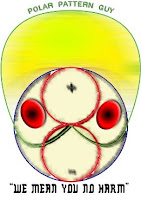
An exhausting (but not exhaustive by any means) survey of the microphone collection offered by the EMU. Of particular interest to me was the experiment whereby we set up 3 different microphones for the same source and listened to each independently. The lesson in this experiment was clear: there is no given “best microphone” for any application and different microphones will give better (or worse) results for different sources in different locations and who knows, maybe even different atmospheric conditions! The differences in the microphones’ warmth and colour were far more obvious when applied to a female (higher frequency) voice as supplied by Kristie than they were when we listened to the manly tones of Sam and Joe. I found that interesting to note also. I’ve done some research and found that the cardioid polar pattern is constructed by a sort of “combination” of the techniques used in omni and figure 8 polar patterns, where the shape of the cardioid is determined by the amount of either polar pattern engineered into the microphone. The question of how this is achieved arose during the lecture and it was suggested that this was done electronically within the mic but I get the impression that there is also an acoustic labyrinth behind the diaphragm which determines the final spatial sensitivity. Here’s a couple of links which provide really good microphone theory overviews: http://www.soundonsound.com/sos/mar07/articles/micpatterns.htm
http://ccrma.stanford.edu/courses/192a/SSR/Microphones.pdf. (THIS IS A PDF, AS IT SAYS)
http://ccrma.stanford.edu/courses/192a/SSR/Microphones.pdf. (THIS IS A PDF, AS IT SAYS)

No comments:
Post a Comment